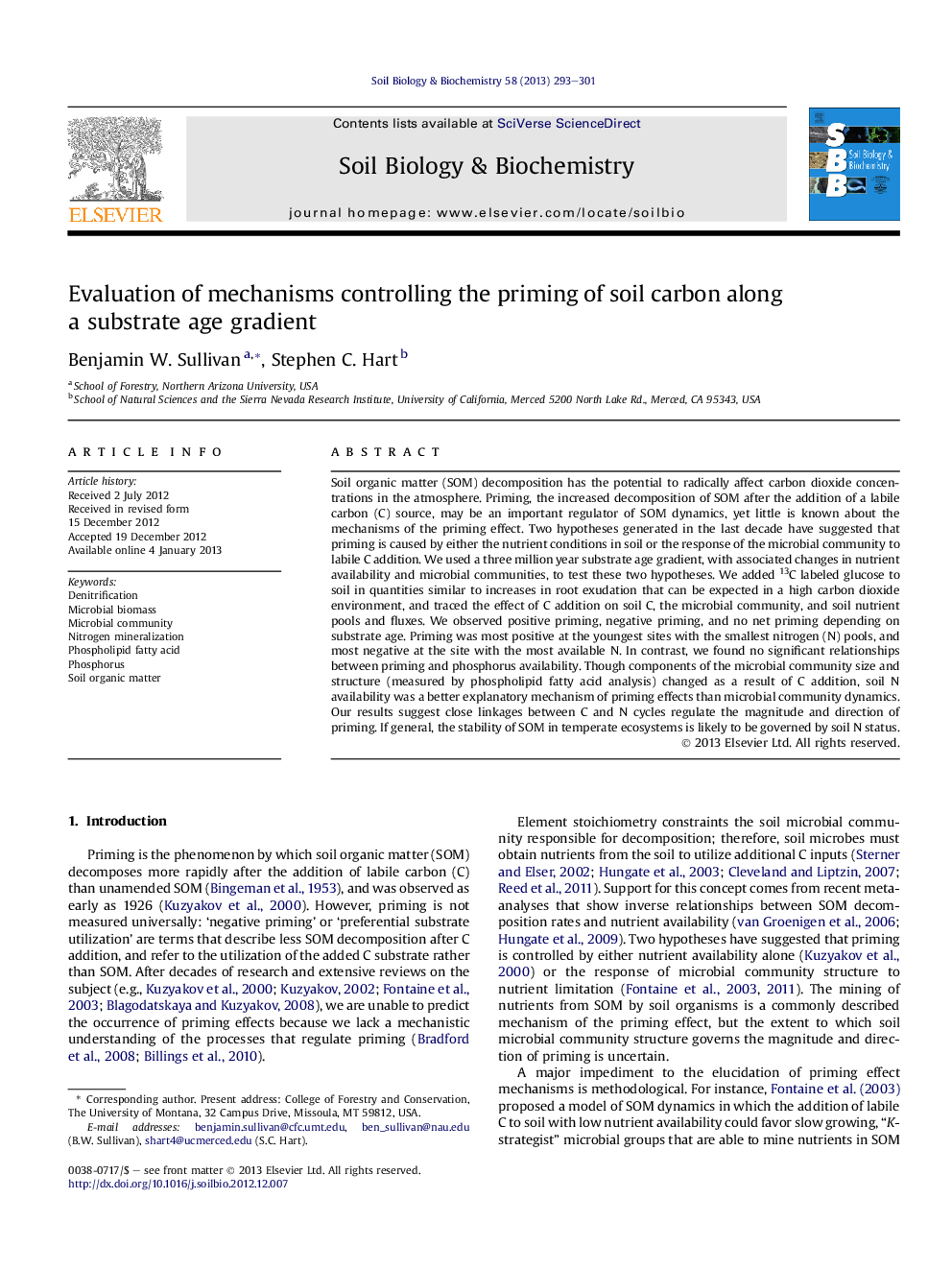| کد مقاله | کد نشریه | سال انتشار | مقاله انگلیسی | نسخه تمام متن |
|---|---|---|---|---|
| 2024897 | 1542626 | 2013 | 9 صفحه PDF | دانلود رایگان |

Soil organic matter (SOM) decomposition has the potential to radically affect carbon dioxide concentrations in the atmosphere. Priming, the increased decomposition of SOM after the addition of a labile carbon (C) source, may be an important regulator of SOM dynamics, yet little is known about the mechanisms of the priming effect. Two hypotheses generated in the last decade have suggested that priming is caused by either the nutrient conditions in soil or the response of the microbial community to labile C addition. We used a three million year substrate age gradient, with associated changes in nutrient availability and microbial communities, to test these two hypotheses. We added 13C labeled glucose to soil in quantities similar to increases in root exudation that can be expected in a high carbon dioxide environment, and traced the effect of C addition on soil C, the microbial community, and soil nutrient pools and fluxes. We observed positive priming, negative priming, and no net priming depending on substrate age. Priming was most positive at the youngest sites with the smallest nitrogen (N) pools, and most negative at the site with the most available N. In contrast, we found no significant relationships between priming and phosphorus availability. Though components of the microbial community size and structure (measured by phospholipid fatty acid analysis) changed as a result of C addition, soil N availability was a better explanatory mechanism of priming effects than microbial community dynamics. Our results suggest close linkages between C and N cycles regulate the magnitude and direction of priming. If general, the stability of SOM in temperate ecosystems is likely to be governed by soil N status.
► We tested two existing hypotheses explaining the priming effect.
► We used soil from a naturally occurring nutrient gradient.
► We measured positive, negative, and no net priming effects depending on site.
► The priming effect was correlated with pools and fluxes of nitrogen.
► Priming was not correlated with changes to the available phosphorus pool or the microbial community.
Journal: Soil Biology and Biochemistry - Volume 58, March 2013, Pages 293–301